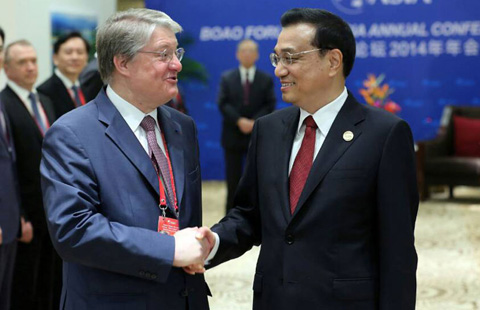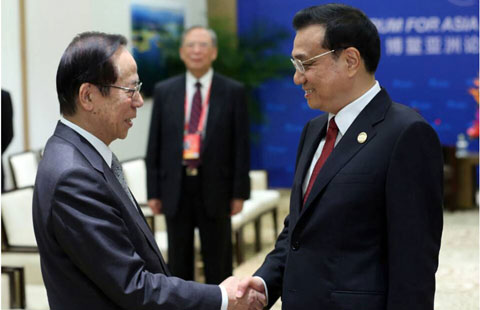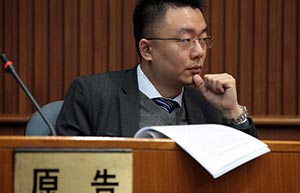Government won't resort to short-term stimulus
By WEI TIAN/JIANG XUEQING (China Daily) Updated: 2014-04-11 07:32
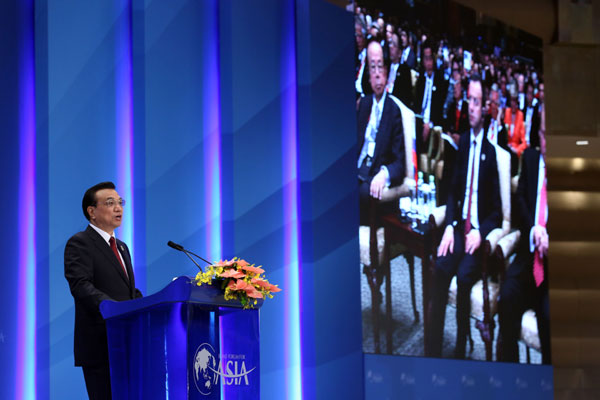 |
|
Premier Li Keqiang delivers a keynote speech at the opening of the 2014 annual conference of the Boao Forum for Asia in Hainan province on Thursday. WU ZHIYI/CHINA DAILY |
Growth under 7.5% acceptable so long as adequate employment exists
Premier Li Keqiang on Thursday dismissed speculation of major policy easing amid the current economic slowdown, saying the government will not opt for a massive short-term stimulus because of "temporary" volatility.

"A growth rate under this year's 7.5 percent target is acceptable so long as sufficient employment is ensured," the premier told guests at the opening ceremony of the 2014 annual conference of the Boao Forum for Asia in Hainan province.
"We will focus more on medium- to long-term healthy development," Li said, adding that China has enough options to respond to any risk and challenges and is capable of maintaining economic growth at a reasonable level.
Streamlining administration and further tax reforms are two of the options on the agenda, said Li.
|
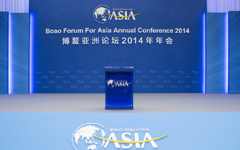 |
|
 |
Li's remarks eased the concerns of some economists that the authorities may again opt for a massive stimulus package similar to the 4 trillion yuan ($645 billion) investment program in 2008, which pushed up asset prices and resulted in severe overcapacity.
Carlos Gutierrez, chairman of Albright Stonebridge Group based in Washington DC, said on the sidelines of the forum that Premier Li's speech gave "a very clear vision of where he wants China to go".
"It was clear, strong and visionary," Gutierrez said. He agreed with Li on not taking strong measures to stimulate the economy despite the fact it is slowing down.
"Being steady is more important than doing something fast. I think the strategy is right," he said.
"The stimulus (in 2008) brought structural damage to the Chinese economy. We are still trying to reverse it," Chen Zhiwu, a professor of finance at Yale University, said during the Boao Forum.
"Massive stimulus is the last thing China needs at the moment," said Liu Huangsong, director of the Institute of Economics at the Shanghai Academy of Social Sciences.
|
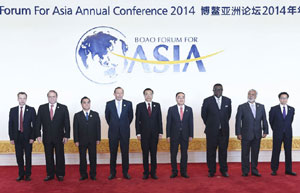 |
 |
- China stocks close mixed on Friday
- PBOC steps up drafting Internet finance guideline
- Sponsor-to-sponsor deals expected to increase: report
- BASF to bring innovative solutions to Chinaplas 2014
- Inflation top priority for PBOC
- CPI growth still showing a weakness
- Failure to act on IMF reform damages G20 leadership
- BMW to recall more than 156,000 cars in US



